6 Best Dashi Substitutes…Wait I Have #4 In My Pantry RIGHT NOW?
Let’s cook Japanese tonight, BUT…..I don’t have dashi! What to do?!
Don’t worry, I’ve got you covered. You can actually make dashi at home with a few simple ingredients, and that’s also the most common and authentic form of dashi you’ll find anywhere else in Japan or abroad.
You can also use one of these 6 secret substitutes instead! Or if you’re not feeling up to it just yet, just buy some of my favorite instant dashi here now!

As I’ve mentioned above, you can actually make dashi at home with a few simple ingredients (find the recipe below), and that’s also the most common and authentic form of dashi you could make.
But if you’re a vegetarian, you might not want to. Or if you don’t have time to get the proper ingredients, you might not be able to.
In this video, I look at the best substitutes you can use. It’s definitely worth the time to watch it, as you’ll also get a lot of visuals on the types of things you could use. Or you can read on if you just want to get down into some of your favorites!

Check out our new cookbook
Bitemybun's family recipes with complete meal planner and recipe guide.
Try it out for free with Kindle Unlimited:
Read for freeIn this post we'll cover:
What makes a good dashi substitute?
Here’s the thing: dashi is a key ingredient in many Japanese dishes because it’s such a Japanese food staple. So, when looking for substitutes you need things with that bonito flakes and kombu dashi flavors in them
Dashi delivers umami and is made from kombu (seaweed) and katsuobushi (fermented fish), so you want a substitute that can deliver umami too.
Chicken or white fish broths can, but a great vegan alternative would be to substitute the katsuobushi for shiitake mushrooms, another umami-rich Japanese ingredient, and keep the kombu.
You can find most substitutes at Asian grocery stores but if not, making dashi from scratch is actually pretty straightforward.
I know some people don’t like powder dashi and similar substitutes which may contain a lot of preservatives and unhealthy ingredients.
The 6 best dashi substitutes
Alright, we now know what dashi is, and how to make it yourself. But what if you don’t have time to make dashi stock, or don’t have access to the ingredients?
When you don’t live in Japan or in Asia, it can be a bit irritating to know that there aren’t a lot of Asian (or more precisely, Japanese) stores that sell instant dashi, or kelp, or shavings of fermented skipjack tuna for that matter.
If you’re a fan of Japanese foods like miso soup, katsu don, sukiyaki, or oyakodon, then it might put you off because you won’t be able to cook your favorite Japanese meals.
Although you can actually order instant dashi online, it may take a few days before it arrives.
Still, it’s a good way to store as much dashi as possible in the cupboard for all your future Japanese delicacies because you can use it in a lot of them!
Don’t fret in the meantime, because there are actually alternatives to dashi broth and you running out of it is the perfect time to try out dashi variants and replacements!
It may not be to your liking when trying out these alternatives for the very first time, especially since you’re accustomed to the taste of regular dashi. But in time, you’ll find that the varying flavors are also good in and of themselves.
Even though the substitutes may not be picked up by the taste receptors that are specifically tuned to umami (glutamic acids), they can still be the next best thing and you might even prefer to use one of these substitutes when you’re trying to stick to a vegan diet.
Here are the 6 best alternatives to dashi!
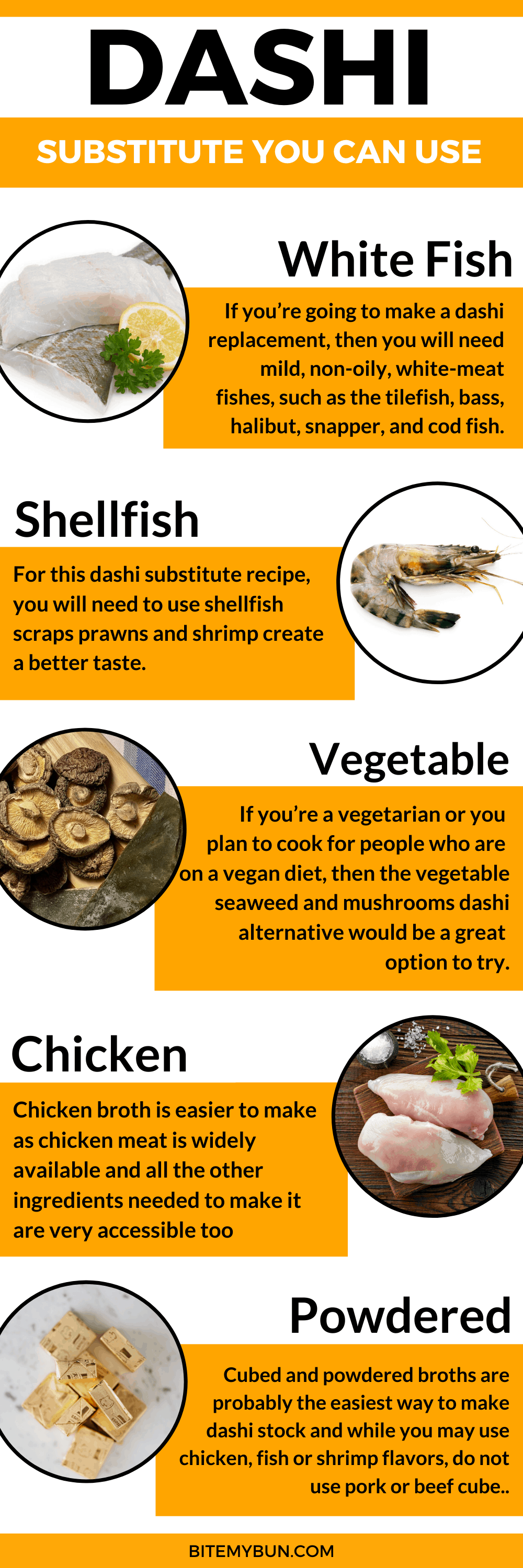
1. White meat fishes in dashi
Going by Japanese tradition, the washoku (和食) or Japanese cooking, they’d originally intended for dashi to be made from fish or seafood broth.
If you’re going to make a dashi replacement, then you’ll need mild, non-oily, white meat fish, such as the tilefish, bass, halibut, snapper, and cod.
Don’t use tuna or mackerel, as these types of fish have a stronger fish flavor and might dominate the overall flavor of the dish that you’re preparing.
Take note that dashi is just a flavor agent and while it gives the perfect taste to the meal, it doesn’t overtake the main flavor in any way.
In order to get started, you’re going to need to get the parts of the fish that people don’t normally eat, like the head and bones (you may also need a few pounds of meat).
These meat scraps are actually free in the fish market, so you don’t necessarily need to spend money on this trip.
Once you’ve acquired the parts you need, then wash them thoroughly and make sure no traces of blood remain on them, as they’ll turn the broth into a bitter juice.
Fumet is what you call fish stock. At the most basic level, it’s comparable to dashi, as the seafood taste is rooted deep within it.
Here’s a dashi stock substitute recipe with white meat fish:
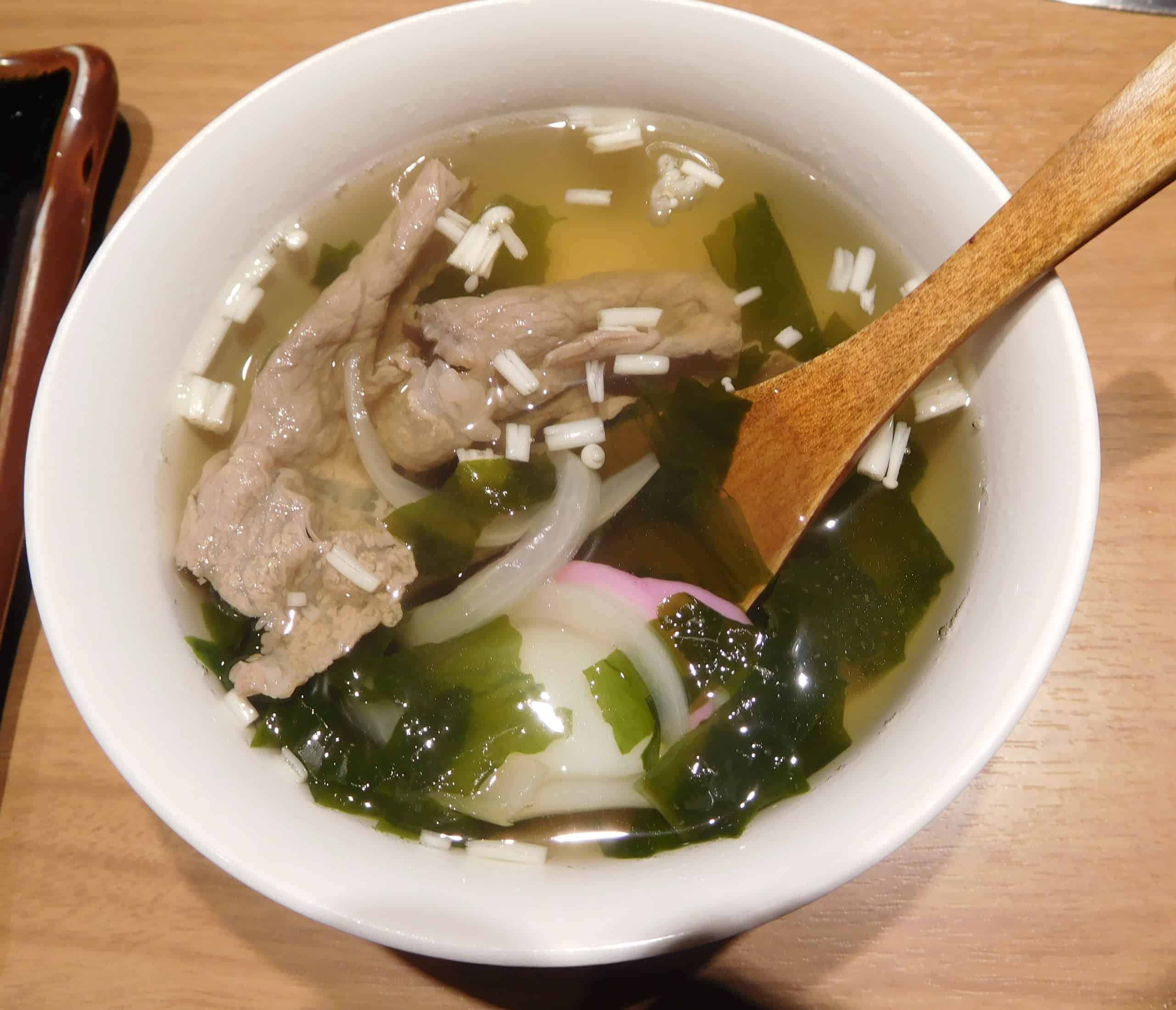
Dashi stock substitute recipe with white meat fish
Equipment
- Cooking pot
- Skillet
Ingredients
- 8 quarts water
- 1 tbsp vegetable oil
- 1 tsp tarragon
- 1/2 tbsp parsley
- 1 tsp fennel
- 1/2 cup celery finely chopped
- 3 cloves garlic minced
- 1/4 cup leek
- 1 large white onion
- 4 bay leaves
- 1/2 cup white wine
- 3 1/2 ounce white meat fish like halibut or bass
- 2 tbsp soy sauce
- 1 tbsp sugar
- 1 tsp mirin
Instructions
- Preheat the vegetable oil in a skillet and saute the aromatics, which are tarragon, parsley, fennel, celery, garlic, leeks, and onions. Cut the vegetables into very thin slices and tie the bay leaves in a string.
- Add the white meat fish scraps to the mix and mix it around.
- Turn on the stove and pour 7 – 8 quarts of water in it, then boil it on high heat.
- Add 1/2 cup of white wine to the aromatics. Make sure that the wine or water fills the skillet so that it almost covers the fish scraps and cook for 1 – 3 minutes.
- Once done, pour the aromatics and fish scraps into the 8 quarts of water that you’ve boiled earlier and add 1 – 2 tbsp. of soy sauce, 1 tbsp of sugar and 1 tsp of mirin. Let it simmer for 1 hour.
- After you’ve let it simmer for an hour, the fish broth substitute for dashi should be ready.
- Strain the mix, put it in a glass container, and refrigerate it. You can store it in the freezer for up to a month before you use it.
Find out more about fish stock and fish stock substitutes here
2. Shellfish dashi replacement
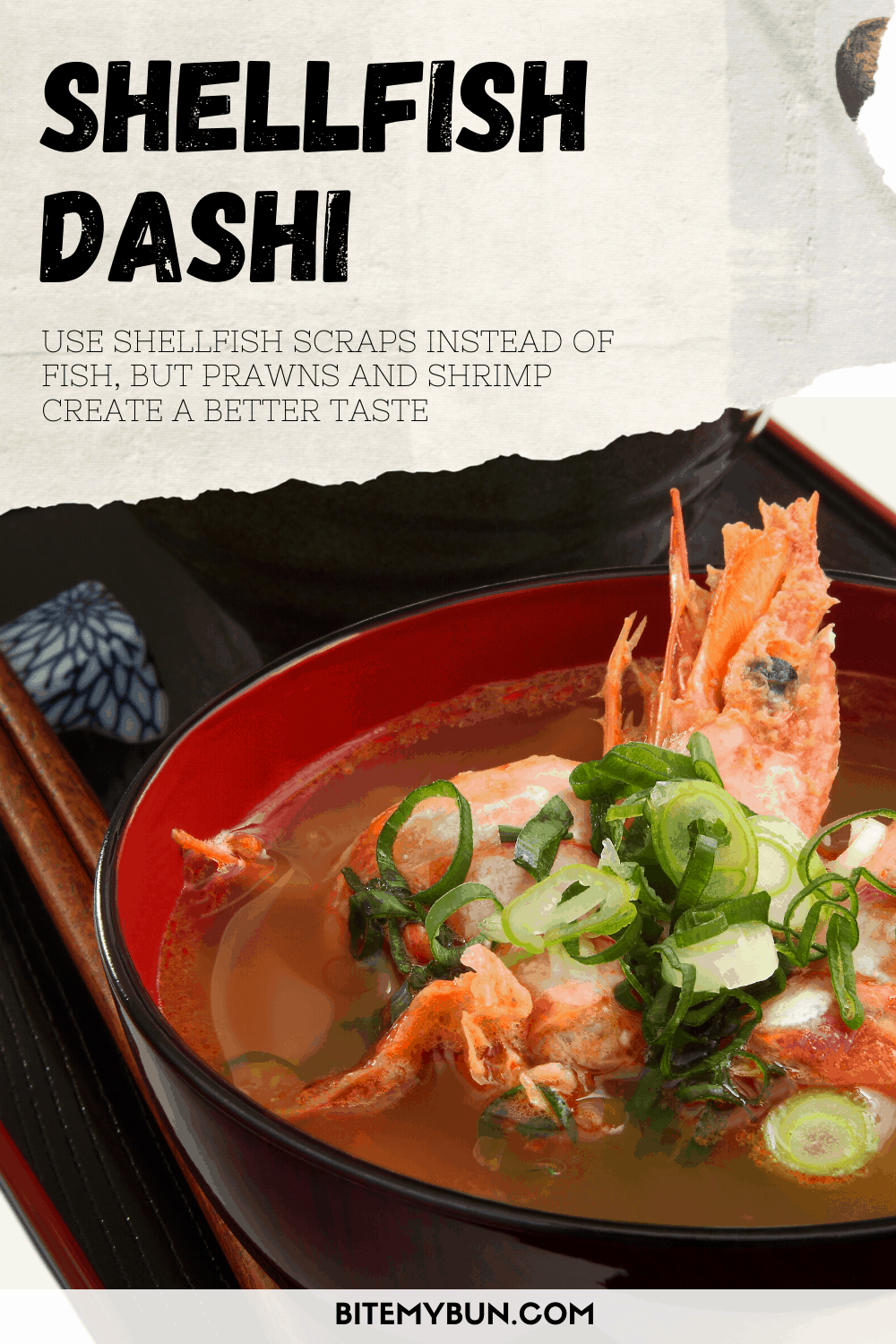
For this dashi substitute recipe, you’ll need to use shellfish scraps instead of fish. But prawns and shrimp create a better taste for this type of dashi than shellfish, so you may want to put more emphasis on shrimp.
How to make the shellfish stock:
- Dice your aromatics into small cubes and the garlic should be minced. These include the 2 cloves of garlic, 3 stalks of celery, 2 cups of carrots, and 2 cups of onions.
- Turn on the stove and preheat 2 tbsp of olive oil in a large frying pan. Saute the aromatics (except the garlic) together with the 1 lb of raw large shrimp scraps. Cook for 15 minutes or until they turn brown in color.
- Now toss in the garlic and stir-fry the whole mix for another 2 minutes.
- Then add the 1 and 1/2 quarts of water, 1/2 cup of white wine, 1/3 cup of tomato paste, 1 and ½ tsp of black pepper (freshly grounded), 1 tbsp of kosher salt, and 10 sprigs of fresh thyme (stems not removed).
- Allow the recipe to boil and simmer for an hour.
- Once cooked, then turn off the stove and pour the recipe into a medium-sized bowl as you let everything pass through a sieve. Extract only the juice/broth that’s made from it and discard the rest.
- You now have made a perfect shellfish/shrimp dashi broth. Store it in your fridge and use it sparingly for any dish that requires dashi in the future.
3. Vegetable vegan dashi recipe

If you’re a vegetarian or you plan to cook for people who are on a vegan diet, then the vegetable seaweed and mushrooms (kombu and shiitake) dashi alternative would be a great option to try.
How to make a vegan dashi broth:
- Use dried mushrooms and seaweed for this recipe and follow the instructions on the kombu pack.
- Get a clean empty pot, pour 4 cups of water into it, and then let the seaweed sit for about 30 minutes (don’t turn on the stove yet).
- Check the taste of the water by using a spoon (the seaweed should turn the water into some kind of tea) and check the seaweed to see if it feels somewhat slippery.
- Once you’ve soaked the kombu for 30 minutes, then it’s time to turn on the stove and boil it on high heat. Boil for 25 minutes.
- Since you’ve only put 4 cups of water into the mix, you may want to also check if the water evaporates too quickly and replenish it to get the desired amount of broth.
- As for the mushroom stock, you just do what was done with the seaweed and also soak it in 4 cups of water for about 30 minutes.
- This time, you don’t need to boil the mushrooms. Simply pinch them to get that strong umami flavor (if you feel the mushrooms are soft enough, then that’s the time they’ll be ready).
- Remove the mushrooms and finally, you can add the 2 liquids together for a strong vegan dashi umami taste.
Unlike the kombu, however, you can reuse the mushrooms up to 10 times before throwing them away! So that means you can make a lot of mushroom dashi substitute.
Place the mushrooms in a plastic bag and put them in the freezer for future use.
Now, you can’t get shiitake mushrooms everywhere. But fortunately, Amazon ships these dried shiitake mushrooms so you can use those in your stock:
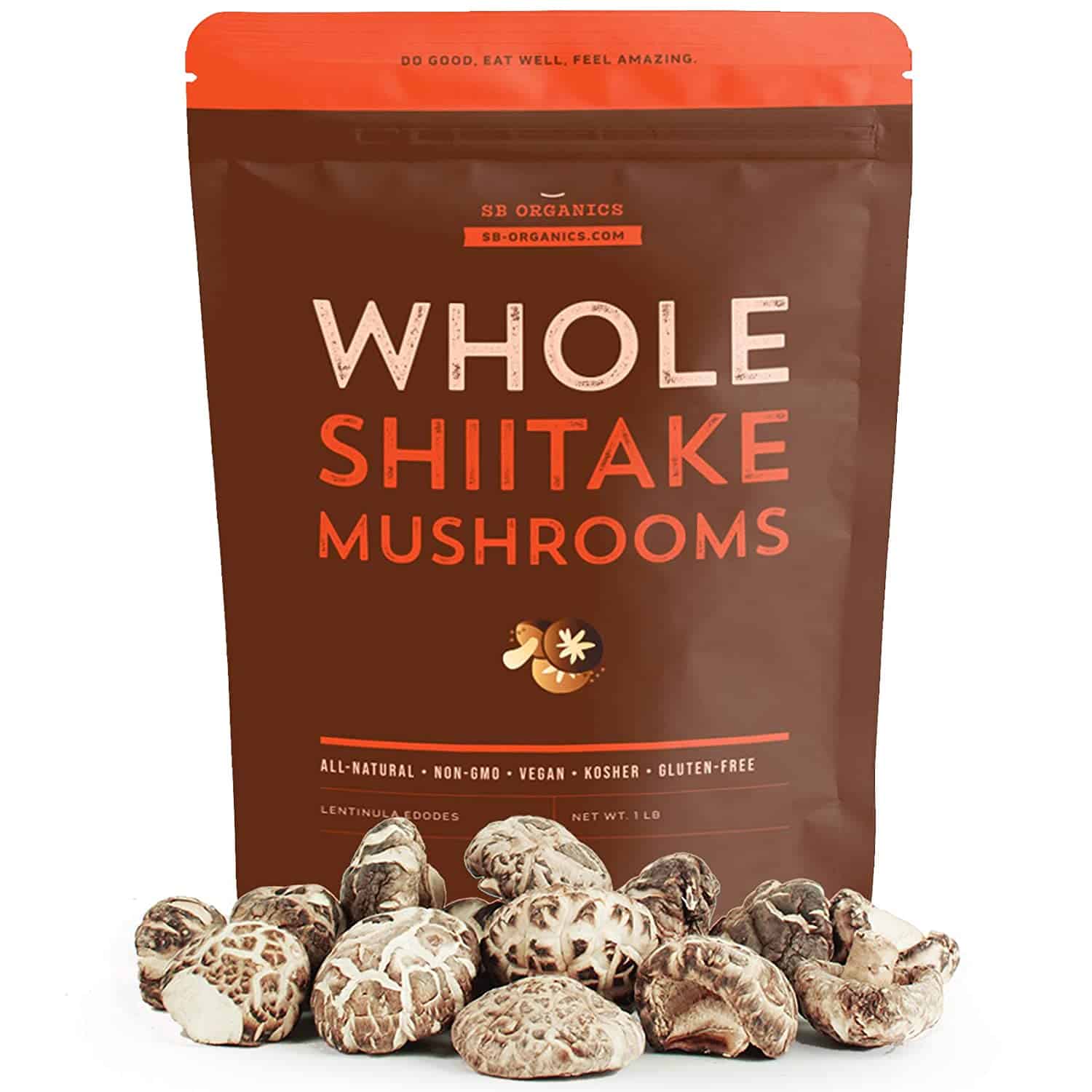

Other vegetables that are also good to make dashi from are sundried daikon and sundried carrot peelings. These vegetables contain basal umami (free glutamate), which is a good dashi alternative.
If you wish to experiment further with other vegetables and herbs to make a dashi substitute, then visit the Umami Information Center for more details.
4. Chicken broth dashi substitute
Chicken broth is easier to make, as chicken meat is widely available and all the other ingredients needed to make it are very accessible too!
You probably even have a bouillon cube lying in your pantry right now!
How to make chicken dashi stock:
Ingredients:
- 1 3-lb chicken, or use parts, such as wings and backs
- 4 stalks celery (with leaves), trimmed and cut into 2-inch pieces
- 4 medium carrots, peeled and cut into 2-inch pieces
- 1 medium onion, peeled and quartered
- 6 cloves garlic, peeled
- 1 small bunch fresh parsley, washed
- 6 sprigs fresh thyme, or teaspoon dried
- 1 teaspoon kosher salt, or to taste
- 4 quarts cold water
Cooking instructions:
- Turn on the stove to medium-high heat. Set a large cooking pot over it and put all the aromatic ingredients in it (4 quarts of cold water, salt, thyme, parsley, garlic, onion, carrots, celery, and chicken). Bring to boil for about 30 minutes and then reduce the temperature to medium-low, cover with the lid, and simmer for 2 hours until the chicken falls apart. Skim the foam from the surface as it builds up.
- Strain the broth through a large sieve or colander into a large bowl. Once cooled, take a big sieve and strain the broth into a large bowl. Using a wooden spoon, press the mixture as much as possible to get all of the broth.
- Pour the broth into 4 pint glass jars, cover them with lids, and refrigerate overnight. Now you’ll have lots of chicken dashi stock in the reserves to use for all your future recipes that may require it.
5. Powdered or cubed broth dashi substitute
Cubed and powdered broths are probably the easiest way to make dashi stock and while you may use chicken, fish, or shrimp flavors, you should never use pork or beef cube or powdered broth, as they won’t accentuate the taste of your dish, but instead, overpower it.
Salt, monosodium glutamate, hydrolyzed soy/corn/wheat gluten protein, hydrogenated cottonseed oil, beef fat, and many more are just some of the ingredients in a beef broth cube.
Too much beef fat and MSG (monosodium glutamate) give the broth cube a strong flavor, but even natural beef broth extracted from fresh cow’s meat still has the same effect.
So it’s best to steer clear of those and pork flavored cubes altogether.
6. Mentsuyu broth
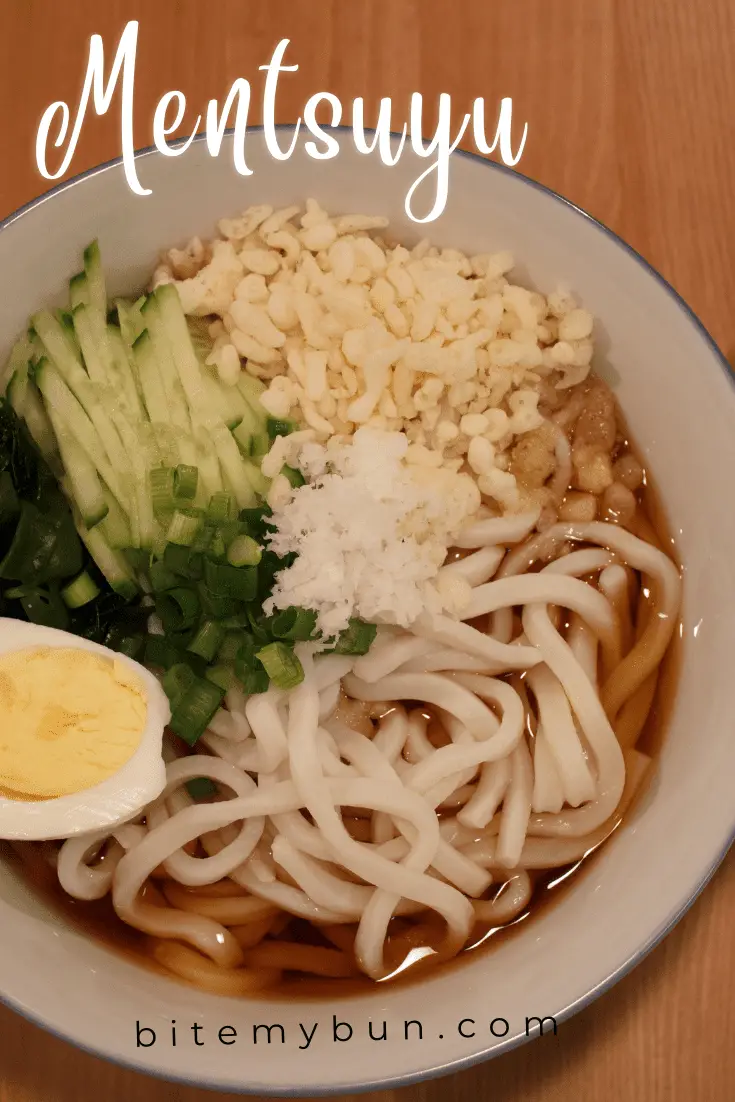
If you’re looking for a seasoning that already contains dashi, you can try Mentsuyu (this is the most popular one in Japan). It’s a liquid soup base or seasoning with a lot of flavors.
The reason why it’s a good substitute for dashi is that it actually contains a lot of dashi stock in it. It’s made by combining dashi, mirin, soy sauce, sugar as well as some other types of seasoning in small quantities.
The dashi they use to make mentsuyu also contains kombu and katsuobushi.
Mentsuyu means noodle soup and the name refers to the fact that this is a popular base seasoning for most Japanese noodle soups like soba, udon, somen and some people also use it in ramen soup.
There are other uses too, and you can use it in all types of soups or simmered stews and meaty dishes. In most cases, recipes that require dashi powder or dashi stock work well with mentsuyu too.
But, the overall opinion is that it pairs well with soy-sauce-based soups, and not so much with miso.
When using mentsuyu as your dashi substitute, you don’t need to use many other seasonings with it because it already contains plenty of seasoning flavors and you don’t want the food to have an overpowering mentsuyu taste.
Wondering what else mentsuyu is used for? Try this simple but exciting Zaru soba recipe for a refreshing experience
What can I substitute for bonito flakes in dashi?
To get the bonito flavor, you can substitute them with some shellfish, preferably shrimp or prawns. A vegan option could be shiitake mushrooms to add umami to your dish.
Enjoy Japanese dishes, even if you’ve run out of dashi stock
It’s true that Japanese cooking uses a lot of dashi stock. But just because you’ve run out of it doesn’t mean you have to go without it!
With these handy substitutes, you’ll be able to whip up some Japanese food, all without losing too much of the dishes’ authenticity.
Just remember the flavors you want to imitate: dried kelp (kombu), katsuobushi (bonito flakes), and for vegans, you want the mushroom flavor of shiitake dashi.
Read more: traditional Japanese Robata grilling
Check out our new cookbook
Bitemybun's family recipes with complete meal planner and recipe guide.
Try it out for free with Kindle Unlimited:
Read for freeJoost Nusselder, the founder of Bite My Bun is a content marketer, dad and loves trying out new food with Japanese food at the heart of his passion, and together with his team he's been creating in-depth blog articles since 2016 to help loyal readers with recipes and cooking tips.
